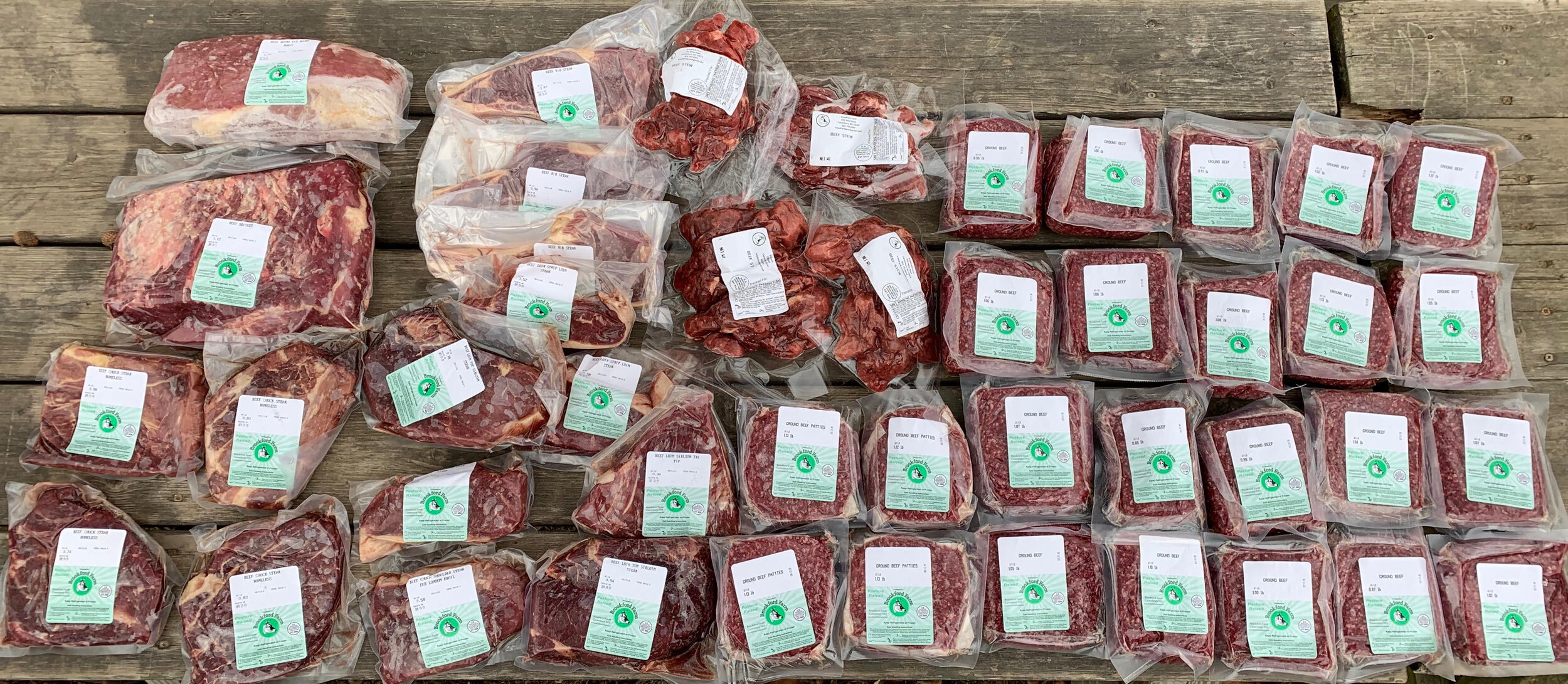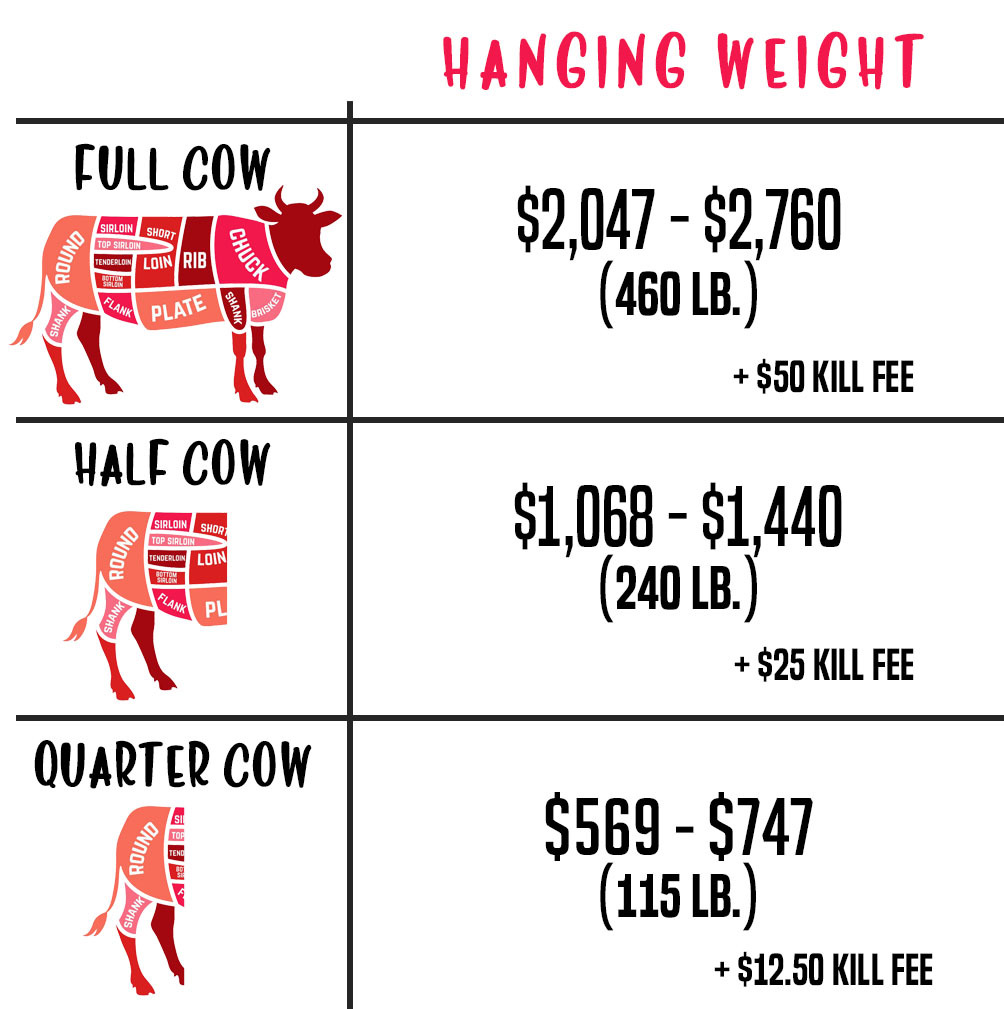In the tapestry of agriculture, the cow stands as a symbol of sustenance and livelihood. Whether grazing peacefully in verdant meadows or supplying the foundation of our dairy industry, these majestic creatures play a pivotal role in our culinary and nutritional landscape. But what is the price of this bovine treasure? If you’ve ever pondered the question, “How much is a whole cow to buy,” embark on an enlightening journey as we uncover the intricacies of this multifaceted investment.

Image: www.brookfordfarm.com
Delving into the Intricacies of Cattle Acquisition
Securing ownership of an entire cow is not a trivial undertaking, requiring careful consideration of factors such as breed, weight, age, and intended purpose. Factors like these weigh heavily on the final price tag, transforming the purchase from a simple transaction into a complex calculation.
A Comprehensive Array of Bovine Breeds
The bovine world boasts an astonishing diversity of breeds, each with its unique characteristics. Some, such as Holsteins and Jerseys, have earned renown for their exceptional milk production. Others, like Angus and Hereford, excel in meat quality, providing a delectable foundation for steaks and roasts. Depending on the breed you choose, the price range can span from $1,500 to upwards of $10,000.
Weight: A Measure of Bovine Abundance
Weight is another crucial determinant of a cow’s value. Heavier cows typically command a higher price due to their increased meat yield. On average, a full-grown cow can weigh anywhere from 800 to 1,500 pounds. For every 100 pounds of live weight, expect to add approximately $100-$200 to the overall cost.

Image: beefposter.blogspot.com
Age: A Timeline of Bovine Development
Age plays a significant role in determining a cow’s price. Young calves, with their potential for growth and productivity, naturally fetch a lower cost compared to more mature cows. As cows age, their meat quality may improve, but their overall health and fertility may decline, influencing their value accordingly.
Purpose: A Guiding Light in the Bovine Market
The intended purpose of the cow also exerts a substantial impact on its price. Cows destined for milk production generally command a premium over those raised for beef. This disparity stems from the higher investment required for dairy farming, including specialized equipment and nutritional considerations.
Unveiling the Price Spectrum: A Range of Bovine Expenditure
Equipped with a deeper understanding of the factors that shape the price of a cow, we can now unveil the potential range of expenditure. For a cow weighing 1,000 pounds, intended for beef production, the price can fall anywhere between $1,000 and $2,000. Conversely, a dairy cow of similar weight may command a price of $1,500-$2,500, reflecting the higher investment associated with milk production.
How Much Is A Whole Cow To Buy
Conclusion – A Bovine Investment with Diverse Rewards
The purchase of a whole cow is a substantial investment, one that warrants careful consideration. Whether you’re a seasoned farmer or an aspiring homesteader, understanding the factors that influence the price of a cow empowers you to make an informed decision. From the rich taste of homegrown beef to the nurturing nourishment of fresh milk, the rewards of bovine ownership are as diverse as the creatures themselves.